AARP Eye Center
- AARP Online Community
- Games
- Games Talk
- SongTheme
- Games Tips
- Leave a Game Tip
- Ask for a Game Tip
- AARP Rewards
- AARP Rewards Connect
- Earn Activities
- Redemption
- AARP Rewards Tips
- Ask for a Rewards Tip
- Leave a Rewards Tip
- Caregiving
- Caregiving
- Grief & Loss
- Caregiving Tips
- Ask for a Caregiving Tip
- Leave a Caregiving Tip
- Help
- Membership
- Benefits & Discounts
- General Help
- Entertainment Forums
- Rock N' Roll
- Let's Play Bingo!
- Leisure & Lifestyle
- Health Forums
- Brain Health
- Conditions & Treatments
- Healthy Living
- Medicare & Insurance
- Health Tips
- Ask for a Health Tip
- Leave a Health Tip
- Home & Family Forums
- Friends & Family
- Introduce Yourself
- Housing
- Late Life Divorce
- Our Front Porch
- Money Forums
- Budget & Savings
- Scams & Fraud
- Retirement Forum
- Retirement
- Social Security
- Technology Forums
- Computer Questions & Tips
- About Our Community
- Travel Forums
- Destinations
- Work & Jobs
- Work & Jobs
- AARP Online Community
- Home & Family Forums
- Our Front Porch
- Re: NEW TOPIC: "FOR THE BIRDS"!
NEW TOPIC: "FOR THE BIRDS"!
- Subscribe to RSS Feed
- Mark Topic as New
- Mark Topic as Read
- Float this Topic for Current User
- Bookmark
- Subscribe
- Printer Friendly Page
- Mark as New
- Bookmark
- Subscribe
- Mute
- Subscribe to RSS Feed
- Permalink
- Report
NEW TOPIC: "FOR THE BIRDS"!
This is very simple! Find a picture or take a photo of a bird or group of birds. Then post it along with it's name, short information about it and photo credit if available.
A gorgeous Dwarf Kingfisher enjoying the rain.
Credit: Rahul Belsare Photography.
The Oriental dwarf kingfisher (Ceyx erithaca), also known as the black-backed kingfisher or three-toed kingfisher, is a species of bird in the family Alcedinidae. A widespread resident of lowland forest, it is endemic across much of the Indian subcontinent and Southeast Asia. It is found in Bangladesh, Bhutan, Brunei, Cambodia, India, Indonesia, Laos, Malaysia, Myanmar, Singapore, Sri Lanka, and Thailand.
- Mark as New
- Bookmark
- Subscribe
- Mute
- Subscribe to RSS Feed
- Permalink
- Report
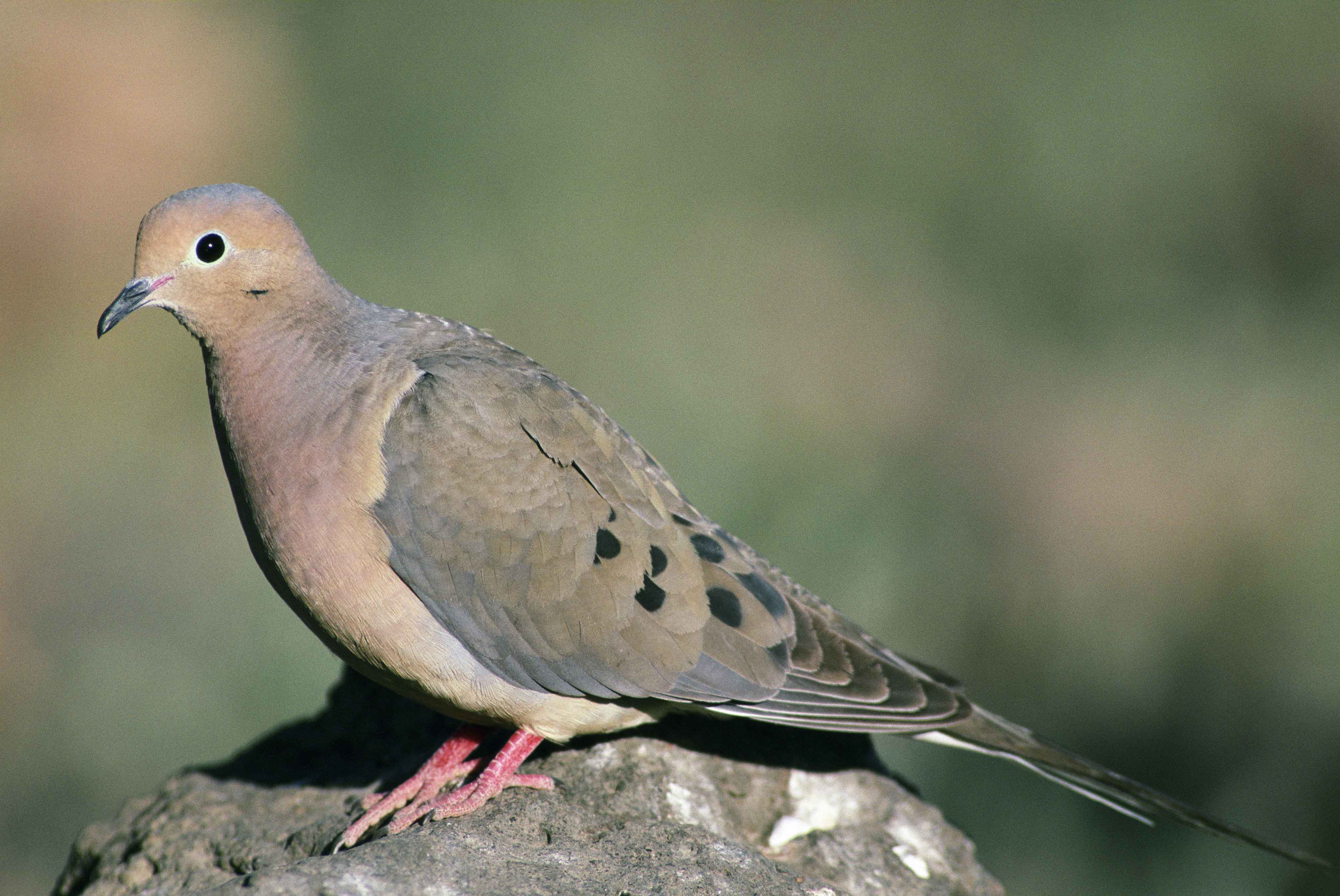
The mourning Dove

Almost every day, I find mourning doves filling themselves at my bird feeders.
And generally, when you see one, you see his or her "partner-for-life" mate.

For they generally are found in pairs.
Mourning Doves are graceful, slender-tailed, small-headed doves that are common across the continent. Mourning Doves perch on telephone wires and forage for seeds on the ground; their flight is fast and bullet straight. Their soft, drawn-out calls sound like laments. When taking off, their wings make a sharp whistling or whinnying. Mourning Doves are the most frequently hunted species in North America.
During the breeding season, you might see three Mourning Doves flying in tight formation, one after another. This is a form of social display. Typically the bird in the lead is the male of a mated pair. The second bird is an unmated male chasing his rival from the area where he hopes to nest. The third is the female of the mated pair, which seems to go along for the ride.
Mourning Doves tend to feed busily on the ground, swallowing seeds and storing them in an enlargement of the esophagus called the crop. Once they’ve filled it (the record is 17,200 bluegrass seeds in a single crop!), they can fly to a safe perch to digest the meal.Mourning Doves eat roughly 12 to 20 percent of their body weight per day, or 71 calories on average.Perhaps one reason why Mourning Doves survive in the desert: they can drink brackish spring water (up to almost half the salinity of sea water) without becoming dehydrated the way humans would.
The Mourning Dove is the most widespread and abundant game bird in North America. Every year hunters harvest more than 20 million, but the Mourning Dove remains one of our most abundant birds with a U.S. population estimated at 350 million.The oldest known Mourning Dove was a male, and at least 30 years, 4 months old when he was shot in Florida in 1998. He had been banded in Georgia in 1968.
- Mark as New
- Bookmark
- Subscribe
- Mute
- Subscribe to RSS Feed
- Permalink
- Report
Here are a couple of cool photos with birds in them! The one with the Lighthouse is Heceta Hear on the Oregon's Pacific Coast.
- Tags:
- For the Birds
- Mark as New
- Bookmark
- Subscribe
- Mute
- Subscribe to RSS Feed
- Permalink
- Report
Stunning Hummingbird Photos You Need to See
Step into the world of hummingbirds with these amazing reader photos.
It’s a magical moment when a hummingbird zips through your backyard or stops at your sugar-water feeder for a snack. From a ruby-throated hummingbird enjoying a refreshing rain shower to a male Anna’s hummingbird territorially puffing himself up, we’ve gathered together some of our favorite, jaw-dropping hummingbird photos from Birds & Blooms readers. You can submit your own hummingbird photo to us using our submission form. Enjoy!
- Tags:
- For the Birds
- Mark as New
- Bookmark
- Subscribe
- Mute
- Subscribe to RSS Feed
- Permalink
- Report


Birds are a group of warm-blooded vertebrates constituting the class Aves, characterized by feathers, toothless beaked jaws, the laying of hard-shelled eggs, a high metabolic rate, a four-chambered heart, and a strong yet lightweight skeleton. Birds live worldwide and range in size from the 5 cm (2 in) bee hummingbird to the 2.75 m (9 ft) ostrich. There are about ten thousand living species,[3] more than half of which are passerine, or "perching" birds. Birds have wingswhose development varies according to species; the only known groups without wings are the extinct moa and elephant birds. Wings, which evolved from forelimbs, gave birds the ability to fly, although further evolution has led to the loss of flight in some birds, including ratites, penguins, and diverse endemic island species. The digestive and respiratory systems of birds are also uniquely adapted for flight. Some bird species of aquatic environments, particularly seabirds and some waterbirds, have further evolved for swimming
Birds are a group of feathered theropoddinosaurs, and constitute the only living dinosaurs, and thus are reptiles. Likewise, the closest living relatives of birds are the crocodilians. Birds are descendants of the primitive avialans (whose members include Archaeopteryx) which first appeared about 160 million years ago (mya) in China. According to DNA evidence, modern birds (Neornithes) evolved in the Middle to Late Cretaceous, and diversified dramatically around the time of the Cretaceous–Paleogene extinction event 66 mya, which killed off the pterosaurs and all non-avian dinosaurs.
Many social species pass on knowledge across generations, which is considered a form of culture. Birds are social, communicating with visual signals, calls, and songs, and participating in such behaviours as cooperative breeding and hunting, flocking, and mobbing of predators. The vast majority of bird species are socially (but not necessarily sexually) monogamous, usually for one breeding season at a time, sometimes for years, but rarely for life. Other species have breeding systems that are polygynous (one male with many females) or, rarely, polyandrous (one female with many males). Birds produce offspring by laying eggs which are fertilised through sexual reproduction. They are usually laid in a nest and incubated by the parents. Most birds have an extended period of parental care after hatching.
Many species of birds are economically important as food for human consumption and raw material in manufacturing, with domesticated and undomesticated birds being important sources of eggs, meat, and feathers. Songbirds, parrots, and other species are popular as pets. Guano (bird excrement) is harvested for use as a fertiliser. Birds figure throughout human culture. About 120 to 130 species have become extinct due to human activity since the 17th century, and hundreds more before then. Human activity threatens about 1,200 bird species with extinction, though efforts are underway to protect them. Recreational birdwatching is an important part of the ecotourism industry.
- Tags:
- For the Birds
- Mark as New
- Bookmark
- Subscribe
- Mute
- Subscribe to RSS Feed
- Permalink
- Report
I have so many bird feeders in my backyard because I want to make sure the birds have a place they can come to and find food. The other reason is because I love watching the birds and all the different kinds of birds that come.
This morning I was visited by one lone Downy Woodpecker. He looked just like this one....

He came. He ate. Got his fill and then flew away. I enjoyed his visit and all of the birds who stopped by today. The feeders are almost empty. So I guess I'll fill 'em up later on.

The beautiful Downy Woodpecker
- Mark as New
- Bookmark
- Subscribe
- Mute
- Subscribe to RSS Feed
- Permalink
- Report
The scarlet ibis (Eudocimus ruber) is a species of ibis in the bird family Threskiornithidae. It inhabits tropical South America and islands of the Caribbean. In form it resembles most of the other twenty-seven extant species of ibis, but its remarkably brilliant scarlet coloration makes it unmistakable. It is one of the two national birds of Trinidad and Tobago.

This medium-sized wader is a hardy, numerous, and prolific bird, and it has protected status around the world. Its IUCN status is Least Concern. The legitimacy of Eudocimus ruber as a biological classification, however, is in dispute. Traditional Linnaean taxonomyclassifies it as a unique species, but some scientists have moved to reclassify it as a subspecies of a more general American ibis species, along with its close relative, the American white ibis (Eudocimus albus).
The species was first classified by Carl Linnaeus in 1758. Initially given the binomial nomenclature of Scolopax rubra[2] (the name incorporates the Latin adjective ruber, "red"), the species was later designated Guara rubraand ultimately Eudocimus ruber.[3]
Biologically the scarlet ibis is very closely related to the American white ibis (Eudocimus albus) and is sometimes considered conspecific with it,[2][4] leaving modern science divided over their taxonomy. The two birds each have exactly the same bones, claws, beaks, feather arrangements and other features – their one marked difference lies in their pigmentation.[5] Traditional taxonomy has regarded the two as separate and distinct.[5]
Early ornithological field research revealed no natural crossbreeding among the red and white, lending support to the two-species viewpoint.[5] More recent observation, however, has documented significant crossbreeding and hybridization in the wild. Researchers Cristina Ramo and Benjamin Busto found evidence of interbreeding in a population where the ranges of the scarlet and white ibises overlap along the coast and in the Llanos in Colombia and Venezuela. They observed individuals of the two species mating and pairing, as well as hybrid ibises with pale orange plumage, or white plumage with occasional orange feathers, and have proposed that these birds be classified as a single species.[2] Hybridization has been known to occur frequently in captivity. However, the two color forms persist in the wild despite overlapping ranges and hybrid offspring having a distinctive color type, so according to the cohesion species concept they would be functionally different species.[6]
Some biologists now wish to pair them with Eudocimus albus as two subspecies of the same American ibis.[2] Others simply define both of them as one and the same species, with ruber being a color variation of albus.
- Tags:
- For the Birds
- Mark as New
- Bookmark
- Subscribe
- Mute
- Subscribe to RSS Feed
- Permalink
- Report
Another grouping of our feathered friends! Once it gets warmer maybe we can get some photos of returning feathered friends to our yards!
- Tags:
- For the Birds
- Mark as New
- Bookmark
- Subscribe
- Mute
- Subscribe to RSS Feed
- Permalink
- Report

These are all...

varying types of...
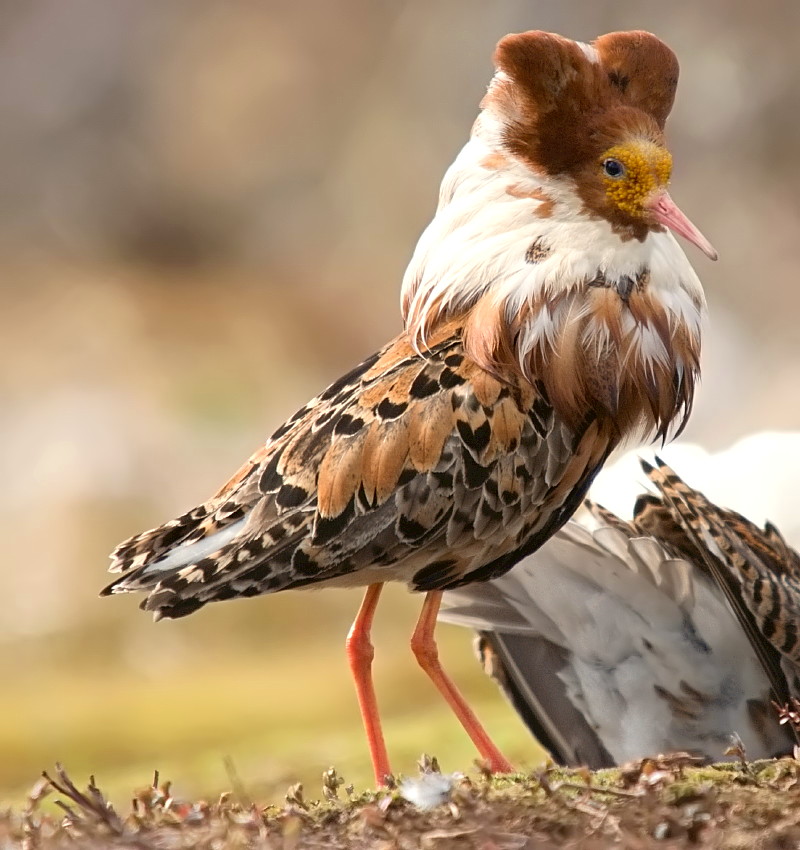
Ruffs.

The Ruff is a medium-sized wading bird that breeds in marshes and wet meadows across northern Eurasia.

This highly gregarious sandpiper is migratory and sometimes forms huge flocks in its winter grounds, which include southern and western Europe, Africa, southern Asia and Australia.
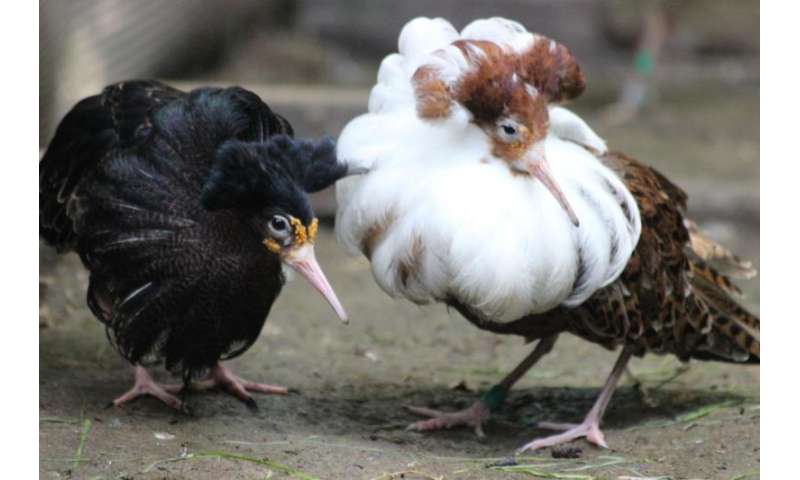
Ruffs are best known for their bizarre courtship plumage and rituals. In spring, male Ruffs are wildly variable in color and pattern of their neck ruffs and head tufts; they gather on display grounds, or "leks," and display to attract females. Rudimentary displays are occasionally seen from spring migrant Ruffs in North America.
- Mark as New
- Bookmark
- Subscribe
- Mute
- Subscribe to RSS Feed
- Permalink
- Report

This is a Hoopoe. Hoopoes are colourful birds found across Afric, Europe, and Asia. They are named after their call and they are notable for their distinctive "crown" of feathers.

The Hoopoe is the National Bird of Israel.
 Hoopoes engage in something called courtship feeding.
Hoopoes engage in something called courtship feeding.
There are three living and one extinct species currently recognized and these birds are considered endangered.
- Mark as New
- Bookmark
- Subscribe
- Mute
- Subscribe to RSS Feed
- Permalink
- Report
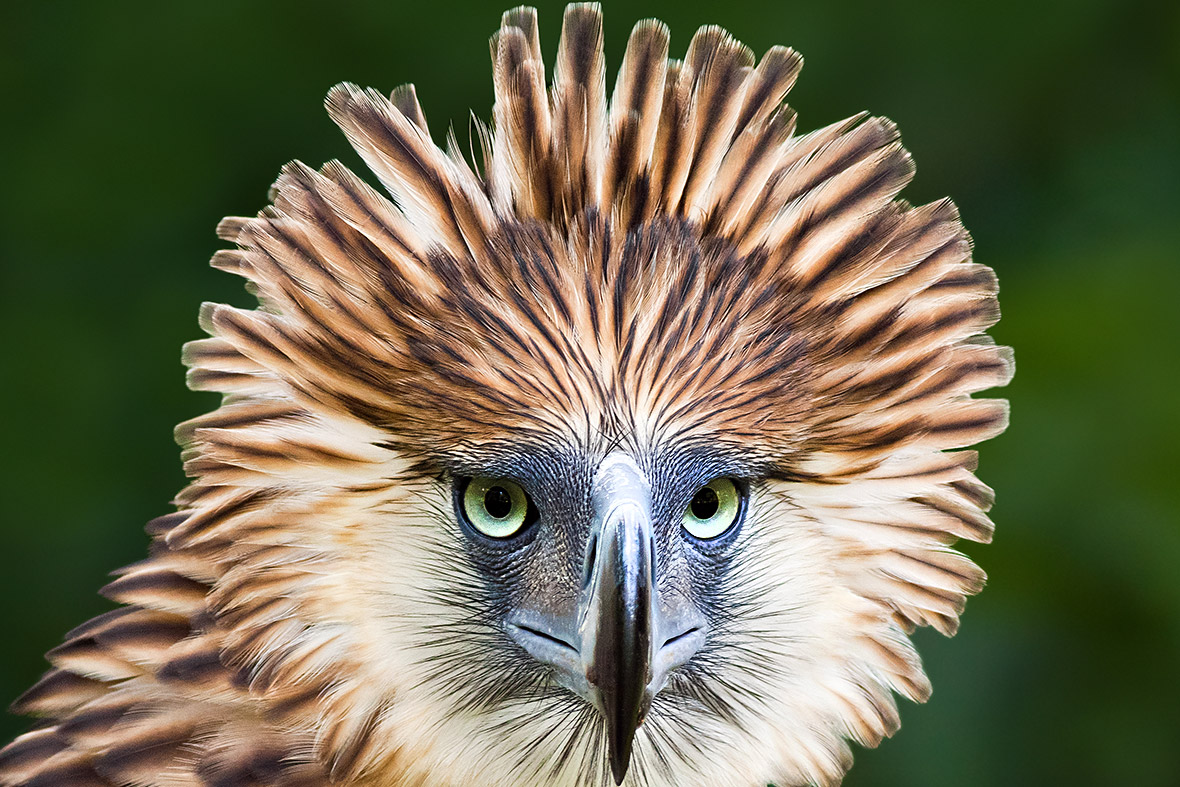
This is a Philippine Eagle which lives in the Philippines. It is one of the largest and rarest eagles on the planet. It's wingspan ranges from six to seven and a half feet.

This predator preys on a variety of animals ranging from monkeys, to rodents, bats, pigs and lizards. This bird is also very much endangered. Killing a Philippine Eagle is punishable under Philippine law by up to 12 years in prison and heavy fines.
- Mark as New
- Bookmark
- Subscribe
- Mute
- Subscribe to RSS Feed
- Permalink
- Report
10 Unusual and Unique Birds in The World
The world is home to 9,993 bird species of endangered,unique and rare birds live worldwide. Rare and unique birds in the World also includes Flightless birds,colorful Toucan,Mandarin duck,Long Tailed Widowbird,Indian Peacock, barn owl, Macaws, Grey Crowned Crane,Secretary bird and the most beautiful Birds of Paradise.
Shoebill
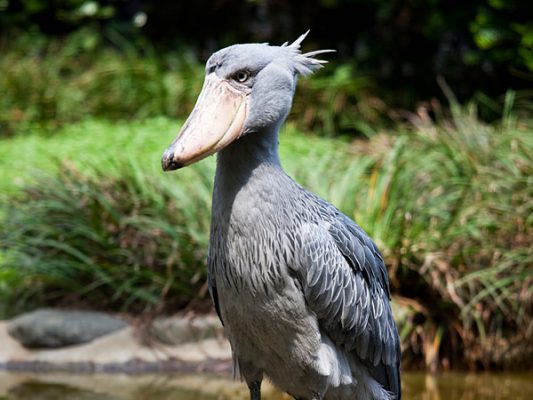
Shoebill is a unusual looking very large stork like bird, lives in large swamps from South Sudan to Zambia. The Shoebill bird identified by its unique features and also noted for its slow movements.
Puffin

Puffins are small species of birds and one of the world’s favourite bird, live in most of the Atlantic region. The most popular Puffin Island in the world is in Westmann Isles and has the largest single puffin colony in the world.
Hoatzin
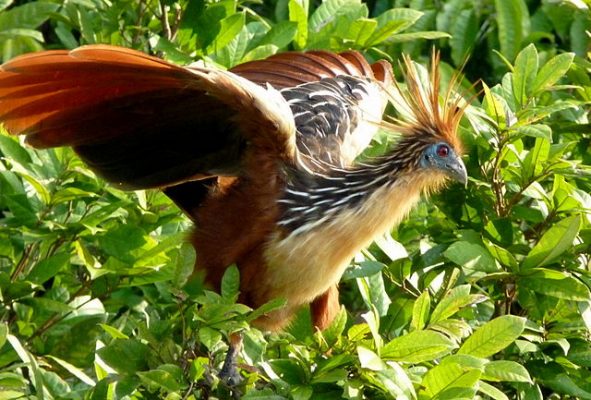
Hoatzin is a colourful bird found in swamps and mangroves forest of the Amazon and Orinoco river basin in South America. The hoatzin has to be one of the strangest, bizarre and unique bird found in the Amazon.
Scarlet Ibis
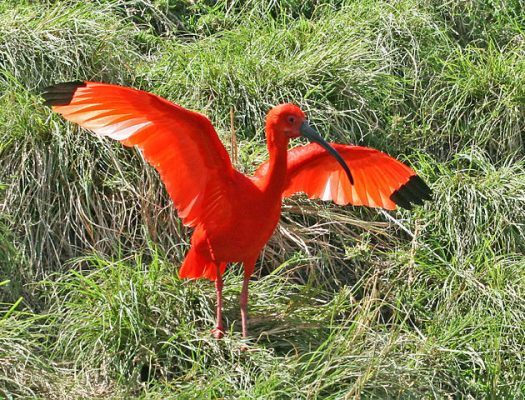
Scarlet Ibis is a unique species of ibis in the bird family, found in the Llanos region,areas of South America and the Caribbean islands. The scarlet ibis has distinctive red plumage and has protected status throughout the world.
Frigatebird
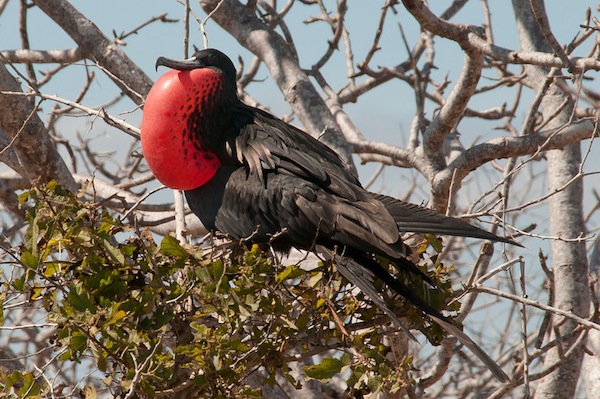
Frigatebirds are seabirds family bird,found across all tropical oceans in the world. The Frigatebirds has black plumage but male has a distinctive and striking red gular sac.
Hummingbird
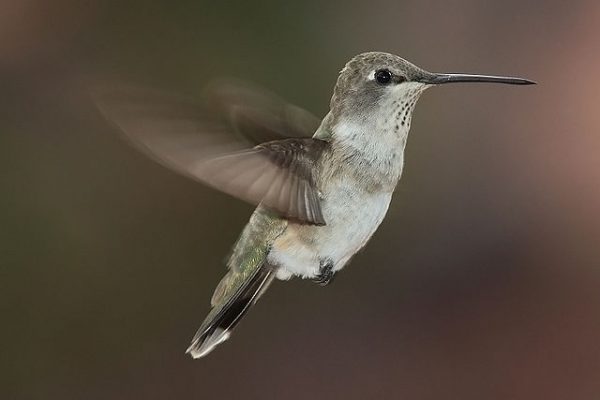
Hummingbirds are the smallest species of bird, mostly feed on insects,spiders and insect eggs. The birds are are known as hummingbirds because the sound of the humming by their beating wings.
Black Heron
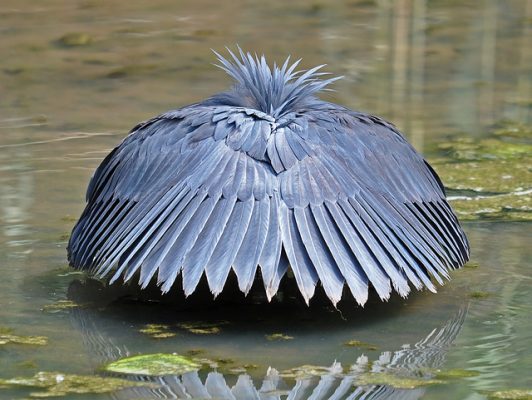
Black Egret also known as black heron is very famous for its unusual and unique hunting method, found in the shallow and freshwater in Sahara Desert. The black heron uses its wings like an umbrella to attract fish and this hunting method is called canopy feeding.
Temminck Tragopan
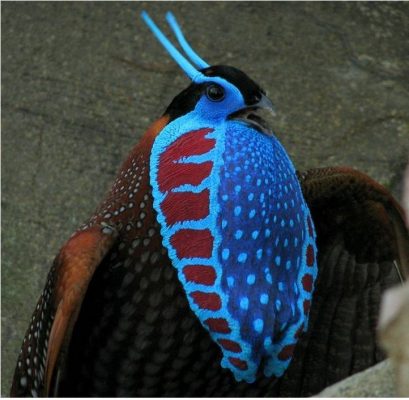
Tragopan is a pheasant species found along the Himalayas and one of the highly endangered and globally threatened bird. Male Temminck’s tragopan has very attractive crest, neck and breast with bright orange collar.
King Vulture
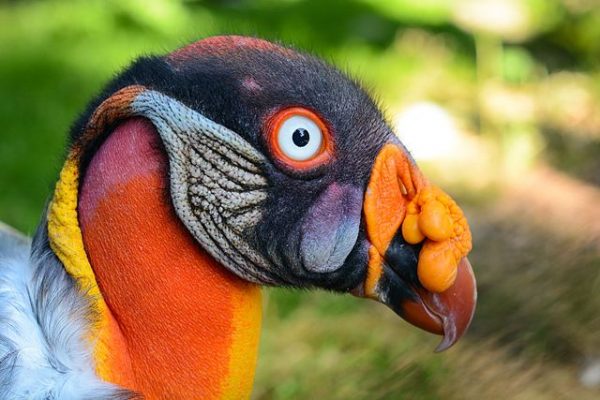
King Vulture is a new world vulture found in Central and South America. This large bird of prey has bald head and gray to black ruff and is the largest of the new world vultures.
- Tags:
- For the Birds
- Mark as New
- Bookmark
- Subscribe
- Mute
- Subscribe to RSS Feed
- Permalink
- Report
@DaveMcK wrote:The many varieties of Cardinals!
My oh my! I had no idea that there were so many different kinds of cardinals in the world. I love seeing the cardinals who grace my birdfeeders on a regular basis. But these lovely creatures are equally different and beautiful!
- Mark as New
- Bookmark
- Subscribe
- Mute
- Subscribe to RSS Feed
- Permalink
- Report
- Mark as New
- Bookmark
- Subscribe
- Mute
- Subscribe to RSS Feed
- Permalink
- Report
Woman captures stunning pictures of hummingbirds in her backyard (8+ photos)



- Tags:
- For the Birds
- Mark as New
- Bookmark
- Subscribe
- Mute
- Subscribe to RSS Feed
- Permalink
- Report
Australian photographer Christian Spencer has lived within Brazil’s Itatiaia National Park for nineteen years. The lush natural surroundings offer a multitude of photo opportunities ranging from pumpkin toadlets to false coral snakes. One of Spencer’s most fascinating finds is the way that light diffracts through the wings of hummingbirds in flight, resulting in a rainbow of colors within the birds’ feathers. The photographer has been following the petite birds for years, and his film recording of the phenomenon was included in his award-winning 2011 short film, The Dance of Time.
More recently, Spencer has returned to these full spectrum moments. Each image in the artist’s hummingbird series captures sunlight filtering through the wings and tail of a black and white Jacobin hummingbird. Despite our age of post-production and photo manipulation, the images were not digitally manipulated; the visual phenomenon is naturally occurring.’WINGED PRISM’ (below) won a prize at the Museum of Modern Art in Resende RJ Brazil, and is available as a fine art print on Spencer’s website. You can follow along with Spencer’s animal encounters and nature-inspired paintings on Instagram. (via My Modern Met)
- Tags:
- For the Birds
- Mark as New
- Bookmark
- Subscribe
- Mute
- Subscribe to RSS Feed
- Permalink
- Report
- Mark as New
- Bookmark
- Subscribe
- Mute
- Subscribe to RSS Feed
- Permalink
- Report
- Mark as New
- Bookmark
- Subscribe
- Mute
- Subscribe to RSS Feed
- Permalink
- Report
Get to Know the Yellow-eyed Junco
Or, as locals in the Southwest once called it, the "lightning bird."
This audio story is brought to you by BirdNote, a partner of the National Audubon Society. BirdNote episodes air daily on public radio stations nationwide.
Transcript:
This is BirdNote.
The Dark-eyed Junco is one of the most abundant backyard birds in North America. Every September, hordes of them move south from the boreal forest, to winter across the US and southern Canada.
The familiar gray and white “snowbird” is not our only junco, though.
In the Southwest, a different species, the Yellow-eyed Junco, lives in cool mountain forests from Arizona and New Mexico, through Mexico into Guatemala. The southern bird shares the neat plumage and ground-hugging habits of its dark-eyed cousin.
But its eyes are an improbably bright golden-yellow, like tiny brass buttons, polished to a brilliant shine and pinned to the little bird’s face.
The great explorer and ornithologist, Francis Sumichrast was in Veracruz, Mexico in the 1860s. He reported that the locals called the junco echa-lumbre [AITCH-ah LOOMbray], the caster of fire, or lightning bird. The Veracrucians, he explained, thought the birds were phosphorescent, collecting light during the day and releasing it at night in the dim pine forests.
One look at the Yellow-eyed Junco’s weird spangled eyes, and you might almost believe it yourself.
For BirdNote, I’m Michael Stein.
Today’s show brought to you by the Bobolink Foundation.
- Tags:
- For the Birds
- Mark as New
- Bookmark
- Subscribe
- Mute
- Subscribe to RSS Feed
- Permalink
- Report
The great horned owl (Bubo virginianus), also known as the tiger owl (originally derived from early naturalists' description as the "winged tiger" or "tiger of the air") or the hoot owl,[2] is a large owlnative to the Americas. It is an extremely adaptable bird with a vast range and is the most widely distributed true owl in the Americas.[3] Its primary diet is rabbits and hares, rats and mice, and voles, although it freely hunts any animal it can overtake, including rodents and other small mammals, larger mid-sized mammals, birds, reptiles, amphibians, and invertebrates. In ornithological study, the great horned owl is often compared to the Eurasian eagle-owl (Bubo bubo), a closely related species, which despite the latter's notably larger size, occupies the same ecological niche in Eurasia, and the red-tailed hawk (Buteo jamaicensis), with which it often shares similar habitat, prey, and nesting habits by day, thus is something of a diurnal ecological equivalent.[4] The great horned owl is one of the earliest nesting birds in North America, often laying eggs weeks or even months before other raptorial birds.
Physiology and measurements
The great horned owl is the heaviest extant owl in Central and South America and is the second-heaviest owl in North America, after the closely related, but very different-looking snowy owl. It is heavily built, with a barrel-shaped body, a large head, and broad wings.[6]Its size can vary considerably across its range, with populations in interior Alaska and Ontariobeing largest and populations in California and Texas being smallest, though those from the Yucatán Peninsula and Baja California appear to be even smaller. Adult great horned owls range in length from 43 to 64 cm (17 to 25 in), with an average of 55 cm (22 in), and possess a wingspan of 91 to 153 cm (3 ft 0 in to 5 ft 0 in), with an average of 122 cm (48 in). Females are somewhat larger than males. Mean body weight is 1,608 g (3.545 lb) for females and 1,224 g (2.698 lb) for males. Depending on subspecies, maximum weight can reach 2,503 g (5.518 lb).
- Tags:
- For the Birds
- Mark as New
- Bookmark
- Subscribe
- Mute
- Subscribe to RSS Feed
- Permalink
- Report

This bird is called Wilson's Bird of Paradise.

Wilson's bird-of-paradise is rather small. Males can reach a length of 16 centimetres (6.3 in) (21 cm including central rectrices) and a weight of 53–67 g., while females can reach a length of 16 cm,but a weight of 52–60 g. The male is a red and black bird-of-paradise, with a yellow mantle on its neck, light green mouth, rich blue feet and two curved violet tail feathers. The head is naked blue, with a black double cross pattern on it. The female is a brownish bird with bare blue crown.
In the field, the blue bare skin on the crown of the bird's head is so vivid that it is clearly visible by night; the deep scarlet back and velvet green breast are lush, the curlicue tail gleaming bright silver.  Its preferred habitat is the hill forest at 300 m of altitude, more rarely the lowland rainforest and the middle mountain forest. An Indonesian endemic, the Wilson's bird-of-paradise is distributed to the hill and lowland rainforests of Waigeo and Batanta Islands off West Papua.
Its preferred habitat is the hill forest at 300 m of altitude, more rarely the lowland rainforest and the middle mountain forest. An Indonesian endemic, the Wilson's bird-of-paradise is distributed to the hill and lowland rainforests of Waigeo and Batanta Islands off West Papua.
It is an endangered species.
- Mark as New
- Bookmark
- Subscribe
- Mute
- Subscribe to RSS Feed
- Permalink
- Report
Brilliantly coloured golden pheasants have been made a rare appearance in a snowy habitat in China's central province of Henan. The reclusive bird, also known as the “fire phoenix” or Chinese pheasant, is a Class II protected species in China because their numbers have been decreasing.4 days ago
Males have a golden-yellow crest with a hint of red at the tip. The face, throat, chin, and the sides of neck are rusty tan. The wattles and orbital skin are both yellow in colour, and the ruff or cape is light orange. The upper back is green and the rest of the back and rump is golden-yellow. The tertiaries are blue whereas the scapulars are dark red. Other characteristics of the male plumage are the central tail feathers, black spotted with cinnamon, as well as the tip of the tail being a cinnamon buff. The upper tail coverts are the same colour as the central tail feathers. The male also has a scarlet breast, and scarlet and light chestnut flanks and underparts. Lower legs and feet are a dull yellow.
The female (hen) is much less showy, with a duller mottled brown plumage similar to that of the female common pheasant. She is darker and more slender than the hen of that species, with a proportionately shorter tail (half her 60–80 cm (24–31 in) length). The female's breast and sides are barred buff and blackish brown, and the abdomen is plain buff. She has a buff face and throat. Some abnormal females may later in their lifetime get some male plumage. Lower legs and feet are a dull yellow.
Both males and females have yellow legs and yellow bills.
- Mark as New
- Bookmark
- Subscribe
- Mute
- Subscribe to RSS Feed
- Permalink
- Report
In honor of the Christmas holiday season, I present...
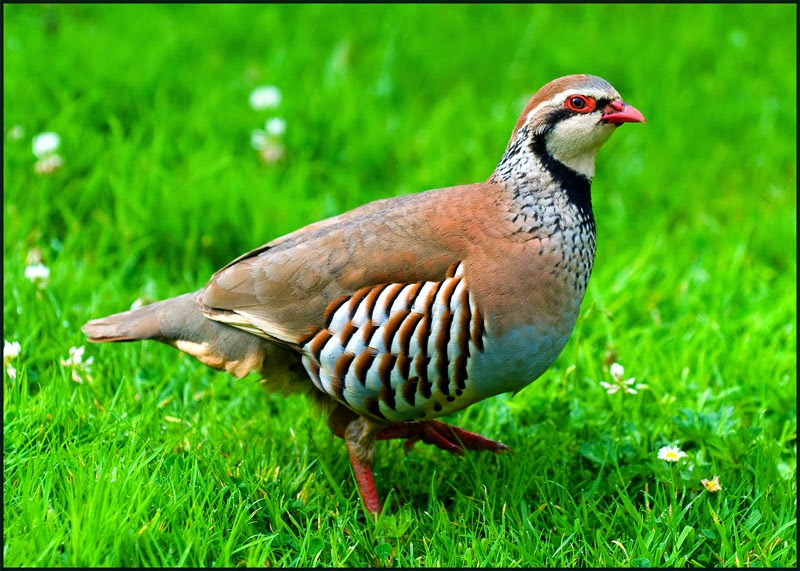
THE PARTRIDGE


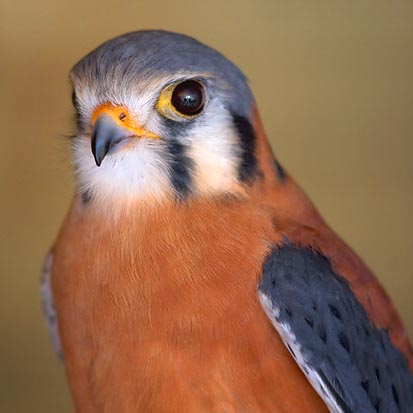
And in remembrance of one of Christmas' favorite holiday songs "The Twelve Days of Christmas," I present..

a partridge in a pear tree. (Photo may have been photoshopped.)
Partridges are medium-sized non-migratory birds, with a wide native distribution throughout the Old World, including Europe, Asia, and parts of Africa. They are sometimes grouped in the Perdicinae subfamily of the Phasianidae (pheasants, quail, etc.). However, molecular research suggests that partridges are not a distinct taxon within the family Phasianidae, but that some species are closer to the pheasants, while others are closer to the junglefowl.
These are medium-sized birds, intermediate between the larger pheasants and the smaller quail. Partridges are native to Europe, Asia, Africa and the Middle East. Some species are found nesting on steppes or agricultural land, while others species prefer more forested areas. They nest on the ground and have a diet consisting of seeds, grapes and insects.
Species such as the grey partridge and the red-legged partridge are popular as game birds, and are often reared in captivity and released for the purpose of hunting. For the same reason, they have been introduced into large areas of North America.
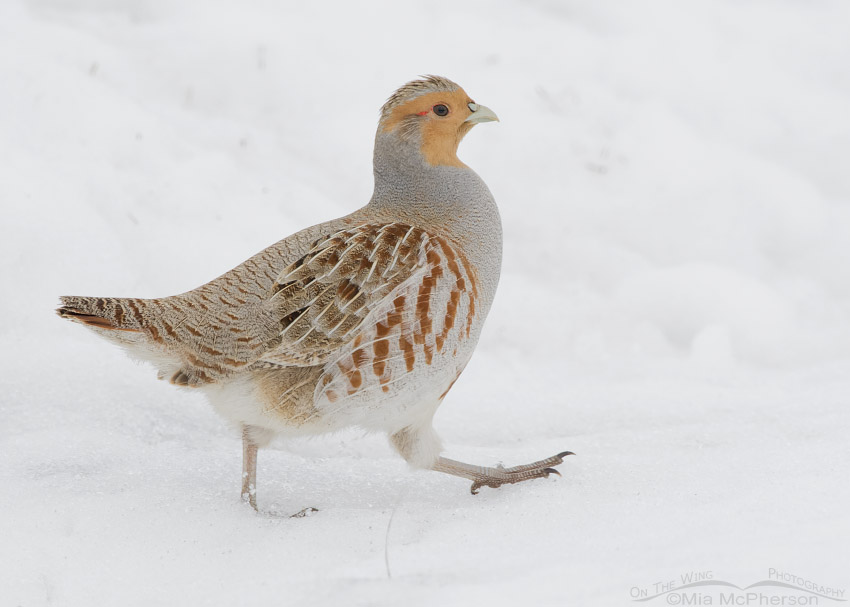
Partridge in snow...

Partridges in love or...in like. Smile.
- Mark as New
- Bookmark
- Subscribe
- Mute
- Subscribe to RSS Feed
- Permalink
- Report
- Mark as New
- Bookmark
- Subscribe
- Mute
- Subscribe to RSS Feed
- Permalink
- Report
Photographer Captured The Image Of A Tiny Owl Hiding From Rain Under A Mushroom
Sometimes, the cutest things on earth are hidden from our eyes. But thanks to modern technology, most of the times these hidden things are brought in to focus. Recently, we came across with such a cute picture of a tiny owl hidden behind a giant mushroom. It was pretty and it seemed that many people were also awed with the picture. A few hours after releasing it, the picture went viral and might even have appeared in your News Feed! So, we thought of interviewing (She has done this interview few years back) the photographer, Tanja Brandt to know the story behind the picture. Speaking to us she said,
“Poldi, our little owl is 1,5 years old. I got him when he was five months old. He didn’t want to come out of his egg and he was very small, the smallest. His six sisters were all hatched, and as he was the last to be born, days after the others, he was very small. I also have a Harris Hawk named Phönix, a Weissgesichtseule named Gandalf, and a snow owl named Uschi”.
- Mark as New
- Bookmark
- Subscribe
- Mute
- Subscribe to RSS Feed
- Permalink
- Report
- Mark as New
- Bookmark
- Subscribe
- Mute
- Subscribe to RSS Feed
- Permalink
- Report
California Quail are plump, short-necked game birds with a small head and bill. They fly on short, very broad wings. The tail is fairly long and square. Both sexes have a comma-shaped topknot of feathers projecting forward from the forehead, longer in males than females.
Adult males are rich gray and brown, with a black face outlined with bold white stripes. Females are a plainer brown and lack the facial markings. Both sexes have a pattern of white, creamy, and chestnut scales on the belly. Young birds look like females but have a shorter topknot.
California Quail spend most of their time on the ground, walking and scratching in search of food. In morning and evening they forage beneath shrubs or on open ground near cover. They usually travel in groups called coveys. Their flight is explosive but lasts just long enough to reach cover.
You’ll find California Quail in chaparral, sagebrush, oak woodlands, and foothill forests of California and the Northwest. They’re quite tolerant of people and can be common in city parks, suburban gardens, and agricultural areas.
"I downloaded AARP Perks to assist in staying connected and never missing out on a discount!" -LeeshaD341679






























































































































